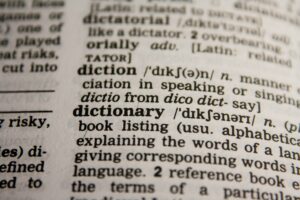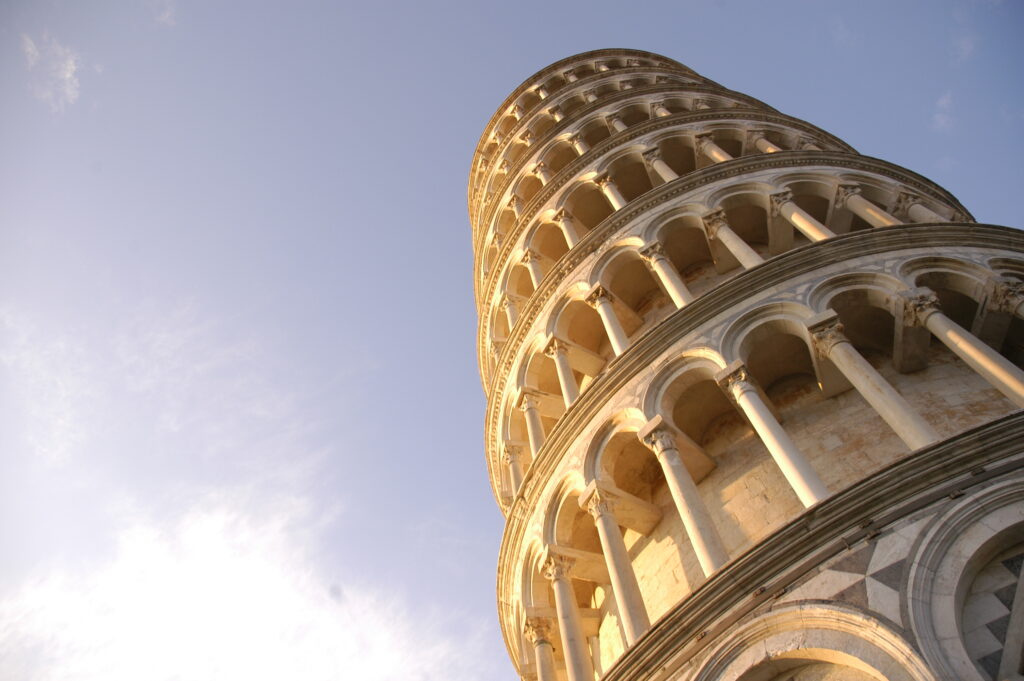EMBRACING THE MULTILINGUAL MAGIC OF SWITZERLAND
 Nestled in the heart of Europe, Switzerland stands as a testament to the power and beauty of linguistic diversity. Renowned for its majestic Alps, intricate watches, and delectable chocolates, the nation is also celebrated for its unique tapestry of languages. As a bastion of multilingualism, Switzerland demonstrates how different linguistic communities can harmoniously coexist within a single country’s borders. This article aims to delve deep into the linguistic landscape of Switzerland, exploring the dominance and interplay of its four official languages – German, French, Italian, and Romansh. We will traverse through the historical alleys that shaped these languages, and witness their enduring impact on various facets of Swiss life, from governance to daily conversations.
Nestled in the heart of Europe, Switzerland stands as a testament to the power and beauty of linguistic diversity. Renowned for its majestic Alps, intricate watches, and delectable chocolates, the nation is also celebrated for its unique tapestry of languages. As a bastion of multilingualism, Switzerland demonstrates how different linguistic communities can harmoniously coexist within a single country’s borders. This article aims to delve deep into the linguistic landscape of Switzerland, exploring the dominance and interplay of its four official languages – German, French, Italian, and Romansh. We will traverse through the historical alleys that shaped these languages, and witness their enduring impact on various facets of Swiss life, from governance to daily conversations.
1. THE LINGUISTIC HEARTBEAT OF SWITZERLAND: AN OVERVIEW
Switzerland isn’t just a melting pot of cultures; it’s a symphony of languages. Its commitment to preserving and promoting multiple official languages sets it apart on the global stage.
- The Four Pillars of Swiss Linguistics:
- German: Dominating the linguistic scene, it is spoken by a majority, especially in the northern and eastern parts of Switzerland.
- French: Offering a touch of romance, French finds its voice in the western regions.
- Italian: Echoing the melodies of Italy, this language thrives in the southern parts of Switzerland.
- Romansh: A unique gem, Romansh is the least spoken yet holds immense cultural significance, especially in the canton of Graubünden.
Each language, with its distinct phonetics and grammar, contributes to the rich cultural mosaic that Switzerland is revered for. They are more than mere modes of communication; they are the threads weaving the Swiss identity.
2. HISTORICAL ROOTS: TRACING SWITZERLAND’S LINGUISTIC EVOLUTION
Understanding the present requires a journey to the past. The linguistic panorama of Switzerland is deeply rooted in its history, influenced by both internal dynamics and external forces.
- Origins and Early Adoptions:
- German: The Germanic tribes, migrating from the North during the early medieval period, introduced the German language. Over time, regional dialects, especially Swiss German, emerged, offering a unique twist to the standard German. More on Swiss German
- French: The western regions of Switzerland, especially the territories close to present-day France, naturally imbibed the French language. The annexation of Vaud by Bern in the 16th century further solidified its presence.
- Italian: The proximity to Italy meant the southern regions of Switzerland naturally adopted Italian. The annexation of Ticino in the Swiss Confederation in the 15th century played a significant role in its linguistic history.
- Romansh: Tracing its roots to the ancient Rhaeto-Romance speakers, Romansh has survived the tides of time, thanks to the secluded valleys of Graubünden. It embodies the linguistic remnants of the Roman Empire’s influence. Discover Romansh
- Switzerland’s Linguistic Tapestry & Cultural Movements:
- The Middle Ages: This period saw the consolidation of territories, and with it, the languages they spoke. Regions became linguistically homogeneous, sowing the seeds for the multilingual nation we recognize today.
- Religious Movements: The Protestant Reformation of the 16th century, led by figures like John Calvin in Geneva, played a role in promoting vernacular languages, especially French, in religious and administrative contexts.
- Political Dynamics: The Congress of Vienna in 1815 and the subsequent creation of the Swiss Confederation played a pivotal role in recognizing the linguistic diversity of the regions, paving the way for the multilingual state.
Switzerland’s journey is a testament to how languages evolve, influenced by migrations, political decisions, and cultural movements. Each language holds a mirror to a chapter of Switzerland’s past, and together, they narrate a captivating tale of a nation that values its linguistic heritage.
3. A CLOSER EXAMINATION OF EACH LANGUAGE:
A. THE GERMAN PALETTE
German Language in Switzerland: The German language, with its practical tone and rich heritage, is the primary language of communication in Switzerland. With over 63% of the population using it as their first language, it predominantly dominates the northern, central, and eastern parts of Switzerland.
Unique Characteristics of the Swiss German Dialect:
- Vocabulary: Swiss German boasts some distinct words not present in standard German. For instance, while Germans say “Apfel” for apple, the Swiss might use “Apfu”.
- Phonetics: The intonation and pronunciation in Swiss German can sometimes be so distinct that even native High German speakers might find it hard to understand.
- No Standard Written Form: Swiss German is traditionally a spoken dialect. Official documents and publications usually utilize Standard German.
- Informal Contexts: Primarily reserved for informal settings, Swiss German is the day-to-day language among natives.
B. THE FRENCH FLOURISH
French Language in Switzerland: Holding the essence of romance and diplomacy, French is prominently spoken in the western parts of Switzerland, especially in cities like Geneva, Lausanne, and Neuchâtel.
Distinguishing Features of Swiss French Dialect:
- Vocabulary Variations: Swiss French has certain words that, while similar to standard French, have distinct local meanings.
- Numerical Nomenclature: Notably, Swiss French uses “septante”, “huitante”, and “nonante” for 70, 80, and 90, unlike the standard French versions.
- Subtle Pronunciation Differences: While largely mutually intelligible with standard French, some nuances do exist.
- Wide Usage: From official to casual settings, Swiss French is omnipresent in the western cantons.
C. ITALIAN INSPIRATIONS
Italian Language in Switzerland: Echoing the melodies of neighboring Italy, Italian graces the southern parts of Switzerland, especially in areas like the Ticino canton.
Nuances of the Swiss Italian Dialect:
- Vocabulary: While mostly similar to standard Italian, some local variations in words and phrases do exist.
- Pronunciation: Some subtle distinctions can be observed, especially in the regional accent and intonation.
- Official and Cultural Roles: Apart from day-to-day communication, Swiss Italian holds cultural significance, especially in festivals and traditions of southern Switzerland.
D. ROMANSH: SWITZERLAND’S LINGUISTIC GEM
Romansh Language in Switzerland: A relic from the Roman era, Romansh is an embodiment of Switzerland’s ancient linguistic roots, predominantly spoken in the secluded valleys of Graubünden.
Exploring the Dialects within Romansh:
- Sursilvan, Sutsilvan, Surmiran, Putèr, and Vallader: These are the primary dialects of Romansh, each having its unique phonetics and vocabulary.
- Historical Significance: Romansh traces its origins back to the Roman Empire and has survived thanks to its isolated speakers and dedicated preservation efforts.
- Official Recognition: Despite being the least spoken among the official languages, Romansh enjoys equal status, especially in its native canton.
Discover the history and intricacies of Romansh
4. LANGUAGE DISTRIBUTION AND USAGE PATTERNS:
Switzerland’s linguistic landscape is diverse, and understanding this requires a deep dive into the statistics and the various areas where these languages play a pivotal role.
Statistical Breakdown:
- German: Dominates with approximately 63% of the population.
- French: Holds strong with around 22% speakers.
- Italian: 8% of the Swiss population speaks Italian.
- Romansh: A minority at 0.5%, but with rich cultural significance.
Areas of Usage in Switzerland:
- Government: All official languages find representation in federal documents, legal procedures, and parliamentary proceedings.
- Education: The public education system ensures instruction in at least two of the official languages.
- Media: Newspapers, radio, and television broadcasts cater to all linguistic communities, reflecting Switzerland’s commitment to multilingualism.
Swiss Federal Council and its linguistic policies
5. THE CULTURAL CANVAS: HOW LANGUAGES SHAPE SWISS IDENTITY
Languages in Switzerland are not just communication tools; they are vibrant threads weaving the country’s cultural tapestry.
Festivals:
- German-speaking regions: Celebrate events like the cow parades in the Alpine regions.
- French-speaking cantons: Renowned for the Fête de l’Escalade in Geneva.
- Italian cantons: Revel in festivities like the Locarno Film Festival.
- Romansh-speaking areas: Have unique traditions like the Chalandamarz
6. THE INFLUX OF IMMIGRANT LANGUAGES: NEW THREADS IN THE SWISS LINGUISTIC FABRIC
Switzerland, with its open economy and a reputation as a global hub, has witnessed a significant influx of immigrants. This migration has brought along a treasure trove of languages, further embellishing Switzerland’s already-rich linguistic fabric.
Spotlight on Immigrant Languages:
- Portuguese: With the increasing number of immigrants from Portugal and Brazil, Portuguese is now spoken by over 5% of the population, making it a notable minority language.
- Spanish: Owing to immigration from Spain and Latin American countries, nearly 2% of the Swiss population now speaks Spanish natively. The language’s global prominence also ensures its continued growth in Switzerland.
- Others: Languages such as Albanian, Serbian, Croatian, Turkish, and Arabic are also finding their voice in Switzerland, thanks to the diverse immigrant communities.
Each immigrant language brings with it a slice of its native culture, traditions, and history, contributing to the multicultural mosaic that Switzerland prides itself on.
Enriching Linguistic Diversity: The immigrant languages, with their unique phonetics, grammar structures, and cultural connotations, offer fresh perspectives and enhance the linguistic diversity of Switzerland. They also play a crucial role in bridging communities, fostering understanding, and promoting multiculturalism.
7. THE MODERN SWISS MULTILINGUAL MINDSET
In an era of globalization, Switzerland stands as a beacon of how multilingualism can be seamlessly integrated into daily life.
Multilingualism in Daily Life:
- Business: With its position as a global business hub, Switzerland sees a confluence of languages in boardrooms and marketplaces. The ability to switch between multiple languages is often seen as an asset, facilitating trade and negotiations.
- Education: Swiss schools prioritize multilingual education. Students are not only proficient in their native language but also in one or more of the other official languages. Additionally, English, due to its global significance, has become a staple in the curriculum.
Interplay of Official and Immigrant Languages: While the official languages continue to dominate formal spheres like administration and education, immigrant languages are carving a niche for themselves. They are especially prevalent in urban centers, shaping contemporary culture, cuisine, and community events.
8. FAQS: DEMYSTIFYING COMMON QUERIES
- Why does Switzerland have four official languages? Switzerland’s unique geographical position, bordered by Germany, France, Italy, and Austria, influenced its linguistic diversity. Historical migrations, conquests, and political decisions cemented the status of these languages.
- How does the Swiss education system accommodate multiple languages? Swiss schools teach in the predominant language of the region. However, students also learn additional national languages as part of the curriculum, promoting mutual understanding and national cohesion.
- Is English widely spoken in Switzerland? Yes, English is commonly spoken, especially in urban areas and among the younger population. Its global significance and Switzerland’s position as an international hub ensure English’s prominence.
- How does media representation work with so many languages? Swiss media is diverse, with newspapers, TV channels, and radio stations catering to each linguistic group. This ensures everyone has access to information in a language they’re comfortable with.
More on Switzerland’s linguistic dynamics
9. RESOURCES & FURTHER READING
For those enchanted by Switzerland’s linguistic charm and keen to delve deeper, here are some curated resources:
- Swiss Confederation’s Language Policies
- History of the Swiss Languages
- The Romansh Language and its Dialects
CONCLUSION: CELEBRATING SWITZERLAND’S LINGUISTIC SYMPHONY
Switzerland, with its rich tapestry of languages, stands as a testament to the beauty of linguistic diversity. Each language, be it an official one or brought by immigrants, tells a story, echoing the tales of ancient settlers, traders, and modern-day citizens. The nation’s commitment to preserving and promoting this diversity is a lesson in unity, understanding, and cultural appreciation. As we navigate an increasingly globalized world, Switzerland’s multilingual model serves as a beacon, reminding us of the bridges language can build. Whether you’re a linguist, a traveler, or someone fascinated by cultures, Switzerland’s linguistic heritage invites you to explore, learn, and celebrate the power of words.




